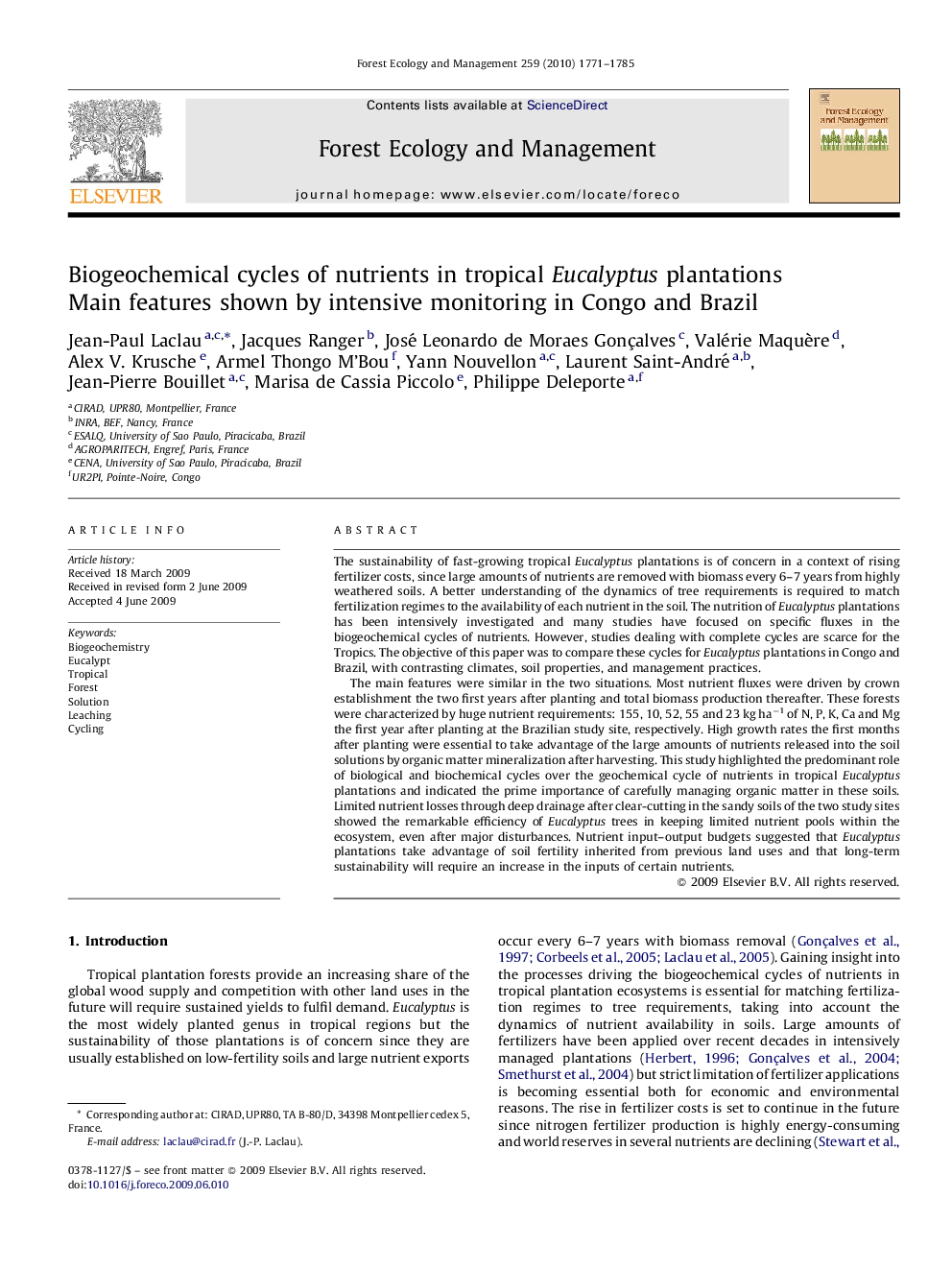| کد مقاله | کد نشریه | سال انتشار | مقاله انگلیسی | نسخه تمام متن |
|---|---|---|---|---|
| 88448 | 159303 | 2010 | 15 صفحه PDF | دانلود رایگان |

The sustainability of fast-growing tropical Eucalyptus plantations is of concern in a context of rising fertilizer costs, since large amounts of nutrients are removed with biomass every 6–7 years from highly weathered soils. A better understanding of the dynamics of tree requirements is required to match fertilization regimes to the availability of each nutrient in the soil. The nutrition of Eucalyptus plantations has been intensively investigated and many studies have focused on specific fluxes in the biogeochemical cycles of nutrients. However, studies dealing with complete cycles are scarce for the Tropics. The objective of this paper was to compare these cycles for Eucalyptus plantations in Congo and Brazil, with contrasting climates, soil properties, and management practices.The main features were similar in the two situations. Most nutrient fluxes were driven by crown establishment the two first years after planting and total biomass production thereafter. These forests were characterized by huge nutrient requirements: 155, 10, 52, 55 and 23 kg ha−1 of N, P, K, Ca and Mg the first year after planting at the Brazilian study site, respectively. High growth rates the first months after planting were essential to take advantage of the large amounts of nutrients released into the soil solutions by organic matter mineralization after harvesting. This study highlighted the predominant role of biological and biochemical cycles over the geochemical cycle of nutrients in tropical Eucalyptus plantations and indicated the prime importance of carefully managing organic matter in these soils. Limited nutrient losses through deep drainage after clear-cutting in the sandy soils of the two study sites showed the remarkable efficiency of Eucalyptus trees in keeping limited nutrient pools within the ecosystem, even after major disturbances. Nutrient input–output budgets suggested that Eucalyptus plantations take advantage of soil fertility inherited from previous land uses and that long-term sustainability will require an increase in the inputs of certain nutrients.
Journal: Forest Ecology and Management - Volume 259, Issue 9, 15 April 2010, Pages 1771–1785